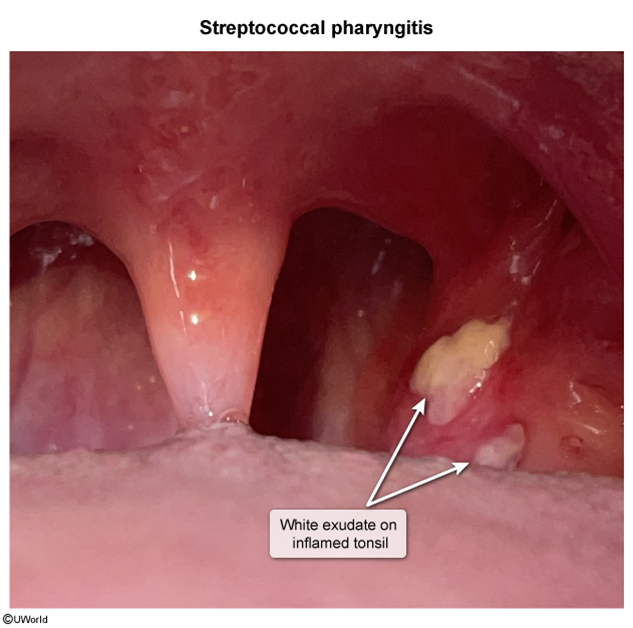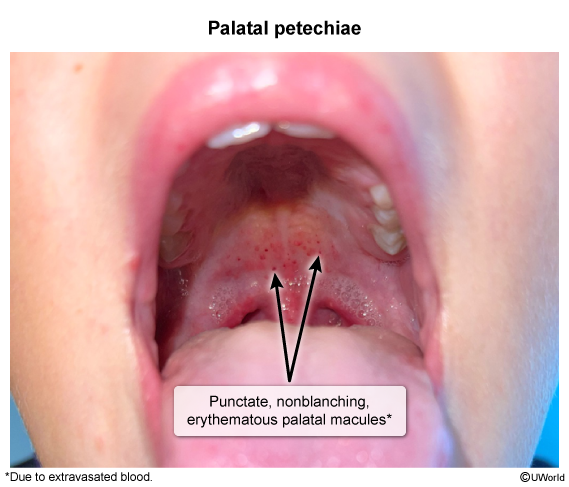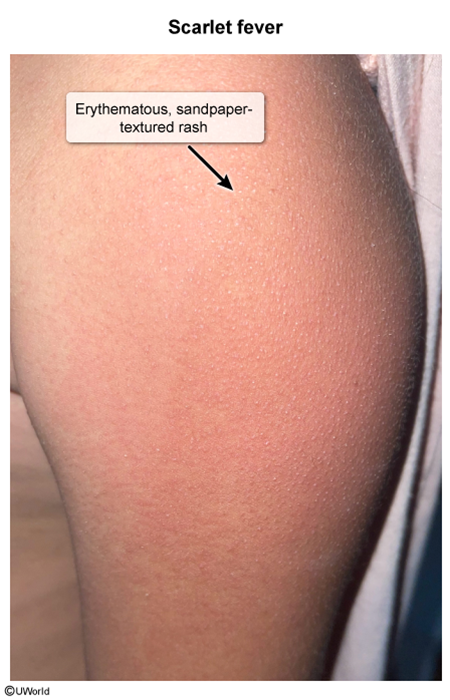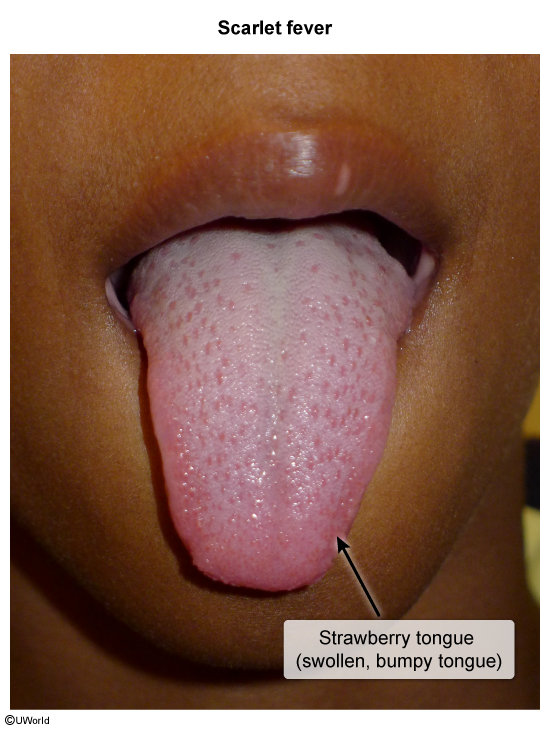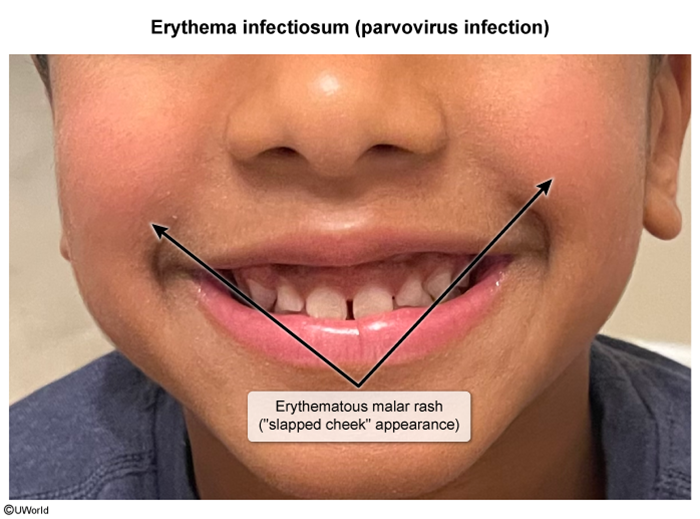Streptococcal Pharyngitis
Article Sections
Introduction
Streptococcal pharyngitis ("strep throat") is caused by Streptococcus pyogenes (group A Streptococcus [GAS]). It typically presents with acute-onset sore throat and fever, often accompanied by tonsillar exudates. Diagnosis is ideally obtained via microbiological testing (eg, rapid antigen detection testing), and treatment (eg, penicillin) is primarily for prevention of immune-mediated, delayed sequelae (eg, acute rheumatic fever).
Pathogenesis
Streptococcal pharyngitis is due to S pyogenes, or GAS, a gram-positive, beta-hemolytic bacterium. It is the leading cause of bacterial pharyngitis and is more common in children and adolescents than in adults.
Transmission occurs via respiratory particles, and pathogenesis involves bacterial invasion into the pharyngeal mucosa. The cell wall of GAS is studded with M protein, an alpha-helical coiled-coil virulence factor that inhibits phagocytosis, prevents complement binding, and aids in epithelial attachment. Inflammation of the pharyngeal mucosa results in posterior pharyngeal erythema and tonsillar exudates, and the subsequent immune response leads to systemic symptoms (eg, fever, headache). Certain strains of GAS produce erythrogenic exotoxins, which are responsible for the characteristic rash of scarlet fever (ie, pharyngitis with a diffuse rash).
Continue Learning with UWorld
Get the full Streptococcal Pharyngitis article plus rich visuals, real-world cases, and in-depth insights from medical experts, all available through the UWorld Medical Library.
Figures
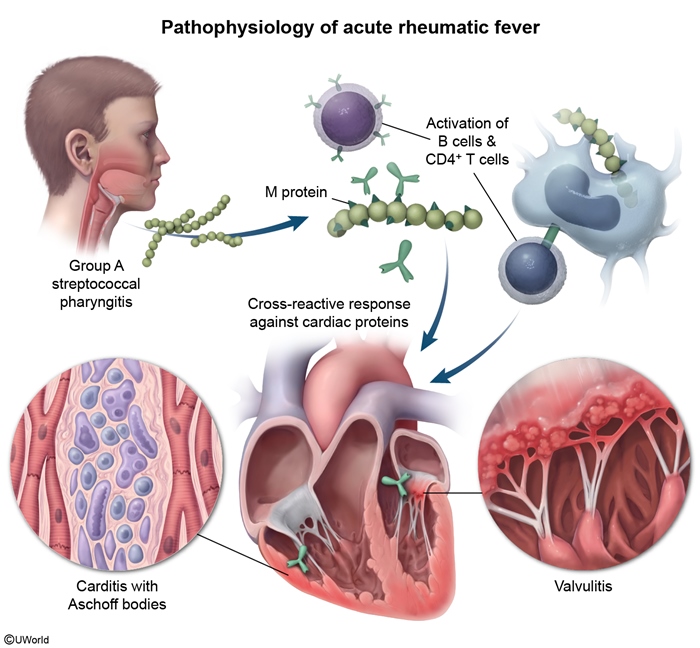
Images
